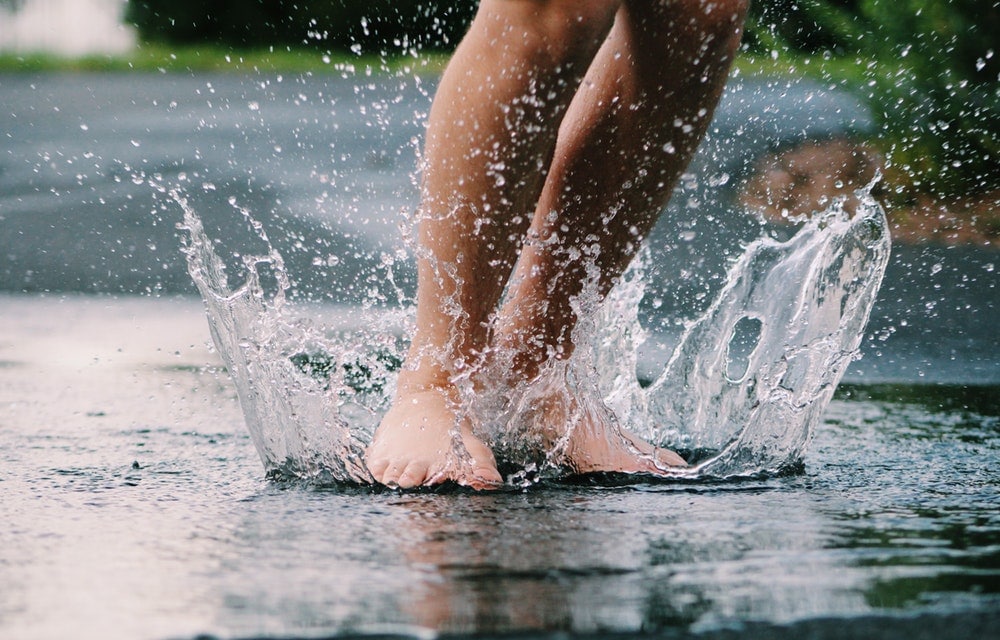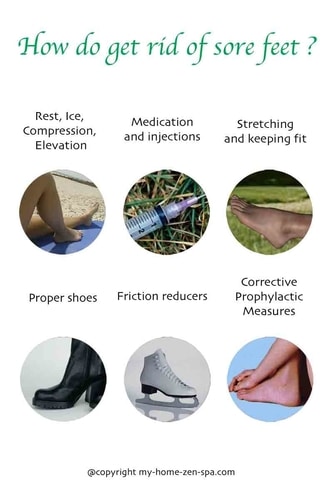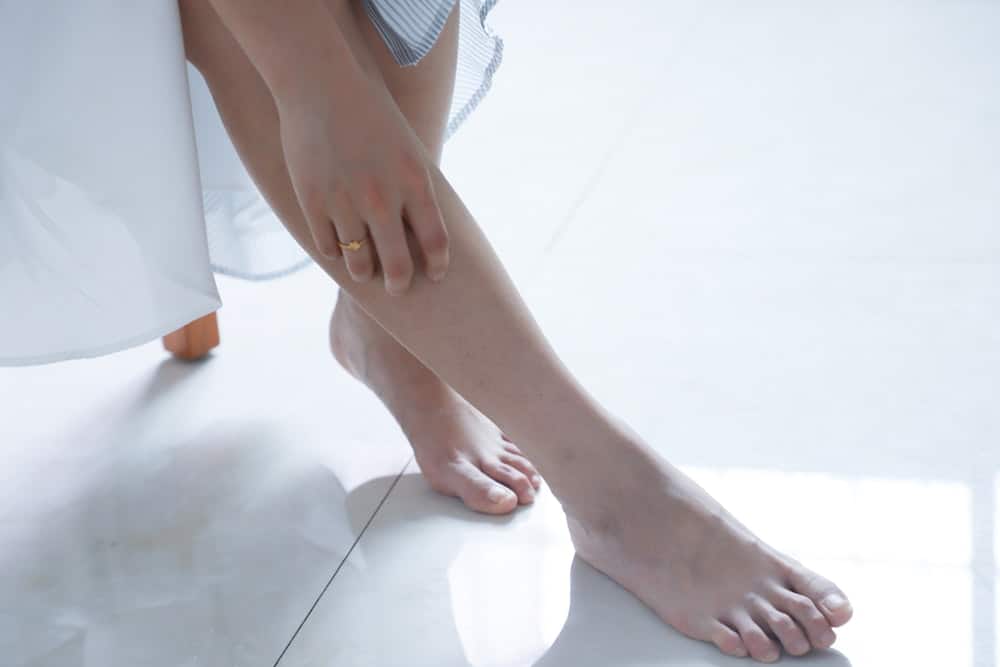Our busy schedules are inevitable, but we sometimes succumb to injuries in the process. Among other parts of our bodies, our feet get injuries and suffer from sore feet. When treated wrongly, these injuries can get quite debilitating. Based on the Bureau of Labor Statistics, over 60,000-foot injuries occurs every year, leading to failure to attend work. Also, acute ankle sprains consist of over 3% of the total visits in the hospitals’ emergency rooms in the US. Fortunately, most of these cases are usually mild or moderate and get cured with hot or cold water therapy.
But many people get confused about what treatment to go for between the two to cure their sole feet. Luckily, this article will give insight into the hot and cold water therapy. In addition, questions like what both hot and cold water therapy entail, when and how one should use them, and their benefits will get discussed. You may need to continue reading if you are searching for the knowledge on the same.
Though the only remedy you require to treat a sore foot is cold or hot water therapy, you also need enough rest and peace of mind. Also, compared to the over-the-counter analgesics, either of these two gets preferred depending on the injury. What confuses people is the failure to identify when to use either hot or cold water therapy in treating their injured feet. Mostly, they cannot identify situations when to use or avoid either of the treatments. We shall look into conditions ideal and unfavorable to use both therapies. But first, let’s discuss what hot and cold water therapy entails.
What Do Hot and Cold Water Entail?
The main reason why people use either hot or cold water therapy is to reduce pain symptoms by modulating the circulation of the local tissue. Also, they help in releasing the natural pain mediators of your body. But other pain-relieving medications temporarily alter the tissues’ biochemical environment when they exert their action. Generally, both get regarded as to offer the same benefit, but it’s not the case. They differ by acting opposite of each other, but depending on how they get used, they can be beneficial or cause more harm. What’s impressive is the fact that both hot and cold water therapies come with other benefits not found with other pain-relieving medications. Are you eager to know? No need to worry; they include the following;
- Control of the tissue damage or process of injury
- They restore tissues and joints flexibility and normal mobility.
- Facilitates the recovery processes and normal healing
- Reduces the swelling of the soft tissues
Both hot and cold water therapies are ideal to use but in specific situations. Let’s look at the incidences someone can use cold therapy.
When Should You Use Cold Water Therapy?
Cold water therapy works when used on acute traumas caused by severe swelling or bruises. Majority of the acute trauma cases get connected to extreme pain that always occurs instantaneously. When you twist your ankle, sprain your soft tissue, or hit your foot or ankle with something heavy, you should perform a cold water therapy. It will work wonders! Cold water therapy acts by making the blood vessels constrict. As a result, internal blood loss and bleeding get minimized.
Also, the sensory fibers get numbed when exposed to cold temperatures. Because of the numbness, the discomfort and pain sensation get reduced. A cold temperature exposure through cold compresses or ice packs also helps reduce the swelling and irritation. One is then able to gain joint motion and normal mobility. If you are wondering how cold water therapy get used, check out herein below;
How Do You Use Cold Water Therapy?
You can use the following ways to apply cold water therapy:
- Ice-cold water. Ideal for compresses
- Ice-cold water
- Ice bags
- Clay or ordinary bags full of chilled, frozen peas.
Here is what you do to achieve the best results.
- Take a cold wrap or compress and apply to the affected or injured area for about 5 – 10 minutes per interval. Ensure you take small breaks within the therapy sessions so that the tissues can revert to their normal temperature.
- The ice bag shouldn’t get applied directly to your skin, wrap it using a thin towel.
- Ensure to begin the therapy immediately after the injury. Then continue for 3-to-5 days at regular intervals.
Similar to the cold water therapy, you don’t just decide to jump into applying a hot water therapy on your sore feet. The injury or pain must get suitable to treat or manage with hot water. The following are situations when hot water therapy is ideal to use. You may also check here our guide on best foot bath for sore feet.
When Should You Use Hot Water Therapy?
Feet experiencing chronic injuries with tension, residual pain, or stiffness get ideal for treating with hot water. Unlike cold water therapy, injuries without bruises get managed best by the hot water therapy. It acts as follows on the injured foot;
- It improves the circulation of the tissues to ensure rapid healing and regeneration of the stiff or inflamed tissues.
- Improving the tissues’ basal metabolism and facilitating elasticity of the stiff or inflamed joints.
Unfortunately, you may be aware of the situation to use hot water therapy but don’t know how to go on with the process. No need to fret; check out the following;
How Do You Use Hot Water Therapy?
First, ensure the condition you want to treat on your foot is ideal for hot water therapy. Such conditions include:
- Various forms of arthritis
- Chronic pains
- Tissue injuries
When hot water therapy gets done before a highly, vigorous, and demanding physical activity, it reduces the soft tissue swelling and pain risk. You get to apply it through:
- Hot water bottles
- Soaking the feet for 10 -20 minutes in warm water
- Heat pads
- Hot water dipped in a towel
- Hot tub
- Hot shower
The above methods offer soothing relief from aches and pain. But if your pain persists, worsens, or is severe, seek medical attention immediately. Also, if in doubt, consult a doctor. But sometimes hot water therapy does not help. Here are the reasons why.
You may also check here the benefits of salt from the dead sea.
Why Doesn’t Hot Water Help?
Concerning running, one should bath first with hot water and use cold water after the run. You may wonder why. It is because after running for long, your joints invariably suffer from inflammation caused by the impact. When your body responses to the stress exerted physically, it suffers from a condition known as inflammation. The causes may be as a result of injury, extreme activity, or infection.
The tissues become porous while the blood vessels swell due to the immune system getting triggered after an inflammation occurs. As a result, the cells responsible for protection get allowed around the injured area. Though the effect targets to repair the damaged cells, sometimes it causes pain, swelling, and redness. If you are an athlete, don’t enhance this negative effect by soaking or bathing in cold water. Instead, encourage the vessels around the injured part to constrict by cooling the affected area. In return, the pain and swelling will disappear.
Hot water baths are ideal for warming up painful muscles, stiffness, and joints. You may wonder how it loosens stiff joints, muscles, and joints. It is when a hot water therapy get combined with stretching. It works like magic in relieving the stiffness by improving the overall mobility. It is best suited for people with fibromyalgia. Also, active runners who train every day and suffers from aches and pre-run tightness benefit from a hot water bath.
Heat or Ice for Foot Pain?
Conclusion
Both the hot and cold water therapies are ideal for treating sore feet. As explained above, you only need to identify what injury suits either of the treatment. If you use a hot water bath on a sore foot instead of a cold water bath and vice versa, the results may get drastic. You may end up hurting yourself more. But with the knowledge gained from the above details, you can now apply your sore feet in hot or cold water effectively.



